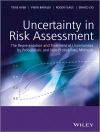Guides readers through the quantitative data analysis process including contextualizing data within a research situation, connecting data to the appropriate statistical tests, and drawing valid conclusions
Introduction to Quantitative Data Analysis in the Behavioral and Social Sciences presents a clear and accessible introduction to the basics of quantitative data analysis and focuses on how to use statistical tests as a key tool for analyzing research data. The book presents the entire data analysis process as a cyclical, multiphase process and addresses the processes of exploratory analysis, decision-making for performing parametric or nonparametric analysis, and practical significance determination. In addition, the author details how data analysis is used to reveal the underlying patterns and relationships between the variables and connects those trends to the data’s contextual situation.
Filling the gap in quantitative data analysis literature, this book teaches the methods and thought processes behind data analysis, rather than how to perform the study itself or how to perform individual statistical tests. With a clear and conversational style, readers are provided with a better understanding of the overall structure and methodology behind performing a data analysis as well as the needed techniques to make informed, meaningful decisions during data analysis. The book features numerous data analysis examples in order to emphasize the decision and thought processes that are best followed, and self-contained sections throughout separate the statistical data analysis from the detailed discussion of the concepts allowing readers to reference a specific section of the book for immediate solutions to problems and/or applications. Introduction to Quantitative Data Analysis in the Behavioral and Social Sciences also features coverage of the following:
* The overall methodology and research mind-set for how to approach quantitative data analysis and how to use statistics tests as part of research data analysis
* A comprehensive understanding of the data, its connection to a research situation, and the most appropriate statistical tests for the data
* Numerous data analysis problems and worked-out examples to illustrate the decision and thought processes that reveal underlying patterns and trends
* Detailed examples of the main concepts to aid readers in gaining the needed skills to perform a full analysis of research problems
* A conversational tone to effectively introduce readers to the basics of how to perform data analysis as well as make meaningful decisions during data analysis
Introduction to Quantitative Data Analysis in the Behavioral and Social Sciences is an ideal textbook for upper-undergraduate and graduate-level research method courses in the behavioral and social sciences, statistics, and engineering. This book is also an appropriate reference for practitioners who require a review of quantitative research methods.
Michael J. Albers, Ph.D., is Professor in the Department of English at East Carolina University. His research interests include information design with a focus on answering real-world questions, the presentation of complex information, and human-information interaction. Dr. Albers received his Ph.D. in Technical Communication and Rhetoric from Texas Tech University.
Mục lục
Preface ix
About the Companion Website xiii
1 Introduction 1
Basis of How All Quantitative Statistical Based Research 1
Data Analysis, Not Statistical Analysis 3
Quantitative Versus Qualitative Research 8
What the Book Covers and What It Does Not Cover 9
Book Structure 10
References 11
Part I Data Analysis Approaches 13
2 Statistics Terminology 15
Statistically Testing a Hypothesis 15
Statistical Significance and p-Value 19
Confidence Intervals 26
Effect Size 27
Statistical Power of a Test 31
Practical Significance Versus Statistical Significance 34
Statistical Independence 34
Degrees of Freedom 36
Measures of Central Tendency 37
Percentile and Percentile Rank 41
Central Limit Theorem 42
Law of Large Numbers 44
References 48
3 Analysis Issues and Potential Pitfalls 49
Effects of Variables 49
Outliers in the Dataset 53
Relationships Between Variables 53
A Single Contradictory Example Does Not Invalidate a Statistical Relationship 60
References 62
4 Graphically Representing Data 63
Data Distributions 63
Bell Curves 64
Skewed Curves 68
Bimodal Distributions 71
Poisson Distributions 75
Binomial Distribution 77
Histograms 79
Scatter Plots 80
Box Plots 81
Ranges of Values and Error Bars 82
References 85
5 Statistical Tests 87
Inter-Rater Reliability 87
Regression Models 92
Parametric Tests 93
Nonparametric Tests 95
One-Tailed or Two-Tailed Tests 96
Tests Must Make Sense 99
References 103
Part II Data Analysis Examples 105
6 Overview of Data Analysis Process 107
Know How to Analyze It Before Starting the Study 107
Perform an Exploratory Data Analysis 108
Perform the Statistical Analysis 109
Analyze the Results and Draw Conclusions 110
Writing Up the Study 111
References 112
7 Analysis of a Study on Reading and Lighting Levels 113
Lighting and Reading Comprehension 113
Know How the Data Will Be Analyzed Before Starting the Study 113
Perform an Exploratory Data Analysis 115
Perform an Inferential Statistical Analysis 122
Exercises 132
8 Analysis of Usability of an E-Commerce Site 135
Usability of an E-Commerce Site 135
Study Overview 135
Know How You Will Analyze the Data Before Starting the Study 136
Perform an Exploratory Data Analysis 138
Perform an Inferential Statistical Analysis 147
Follow-Up Tests 151
Performing Follow-Up Tests 153
Exercises 157
Reference 158
9 Analysis of Essay Grading 159
Analysis of Essay Grading 159
Exploratory Data Analysis 160
Inferential Statistical Data Analysis 165
Exercises 173
Reference 175
10 Specific Analysis Examples 177
Handling Outliers in the Data 177
Floor/Ceiling Effects 182
Order Effects 183
Data from Stratified Sampling 184
Missing Data 184
Noisy Data 186
Transform the Data 187
References 188
11 Other Types of Data Analysis 189
Time-Series Experiment 189
Analysis for Data Clusters 192
Low-Probability Events 193
Metadata Analysis 193
Reference 195
A Research Terminology 197
Independent, Dependent, and Controlled Variables 197
Between Subjects and Within Subjects 199
Validity and Reliability 200
Variable Types 201
Type of Data 201
Independent Measures and Repeated Measures 203
Variation in Data Collection 205
Probability–What 30% Chance Means 212
References 214
Index 215
Giới thiệu về tác giả
Michael J. Albers, Ph.D., is Professor in the Department of English at East Carolina University. His research interests include information design with a focus on answering real-world questions, the presentation of complex information, and human???information interaction. Dr. Albers received his Ph.D. in Technical Communication and Rhetoric from Texas Tech University.












